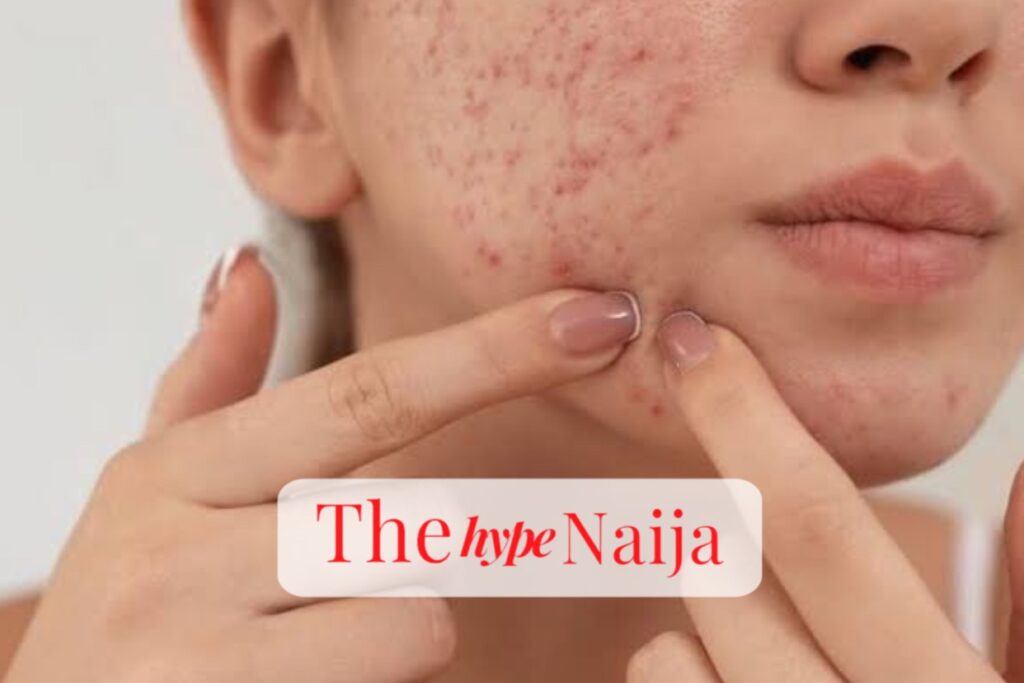Blemished skin, a common concern affecting millions worldwide, can significantly impact one’s self-esteem and confidence. This post is designed to offer you a holistic approach to managing and correcting blemished skin, incorporating skincare routines, lifestyle adjustments, and professional treatments.
Understanding Blemished Skin
Blemished skin is characterized by the presence of acne, pimples, blackheads, whiteheads, and dark spots. Various factors, including hormonal changes, stress, diet, and improper skincare, can contribute to its development.
How to Correct Blemished Skin Easily

Step 1: Establish a Skincare Routine
Cleansing: Begin your day by cleansing your face with a gentle, non-comedogenic cleanser to remove impurities and excess oil without stripping the skin’s natural moisture.
Exfoliating: Exfoliate 2-3 times a week with a chemical exfoliant containing BHAs (like salicylic acid) or AHAs (like glycolic acid). This helps in removing dead skin cells, reducing the appearance of scars, and promoting skin regeneration.
Toning: Apply a toner to help restore your skin’s pH balance and prepare it for further treatment. Opt for alcohol-free toners with soothing ingredients like witch hazel or green tea.
Moisturizing: Hydrate your skin with a lightweight, oil-free moisturizer to maintain its barrier function and prevent overproduction of oil.
Sun Protection: Daily application of a broad-spectrum SPF 30 or higher is crucial to protect your skin from harmful UV rays and prevent dark spots from becoming more pronounced.
Step 2: Targeted Treatments
Spot Treatment: Use products containing benzoyl peroxide or tea tree oil on specific blemishes to kill bacteria and reduce inflammation.
Serums and Gels: Incorporate serums with vitamin C, niacinamide, or retinol to help lighten dark spots, reduce acne scars, and promote an even skin tone.
Step 3: Lifestyle Modifications
Diet: A balanced diet rich in fruits, vegetables, and omega-3 fatty acids can help reduce inflammation and improve skin health. Limit intake of dairy products and high-glycemic foods as they can trigger acne.
Hydration: Drinking adequate water throughout the day helps in detoxifying the body and maintaining the skin’s elasticity.
Stress Management: High stress levels can exacerbate skin blemishes. Incorporate stress-reduction techniques like yoga, meditation, or deep breathing exercises into your daily routine.
Sleep: Ensure you get 7-9 hours of quality sleep each night to allow your skin to repair and regenerate.
Step 4: Professional Treatments
For persistent blemishes, consulting a dermatologist for professional treatments can be beneficial.
Chemical Peels: These involve the application of a chemical solution to the skin, causing it to exfoliate and eventually peel off, revealing new, less blemished skin underneath.
Microdermabrasion: A minimally invasive procedure that uses a special applicator with an abrasive surface to gently sand away the thick outer layer of the skin to rejuvenate it.
Laser Therapy: Targets blemishes with concentrated light therapy to remove dead skin cells, reduce oil production, and diminish scars.
Microneedling: Involves pricking the skin with tiny sterilized needles to stimulate skin repair and reduce the appearance of acne scars.
Step 5: The Role of Makeup
While treating blemished skin, opt for non-comedogenic makeup products to avoid clogging pores. Use a green-tinted primer to neutralize redness, and a lightweight foundation or BB cream to provide coverage without heavy application.
Is it possible to remove dark spots from your face?
Correcting blemished skin requires patience, consistency, and a comprehensive approach. By integrating a tailored skincare regimen, making positive lifestyle changes, and seeking professional advice when necessary, you can significantly improve the appearance of your skin. Remember, the journey to clear skin is a marathon, not a sprint; embracing your skin’s uniqueness and treating it with care is key to achieving lasting results.



